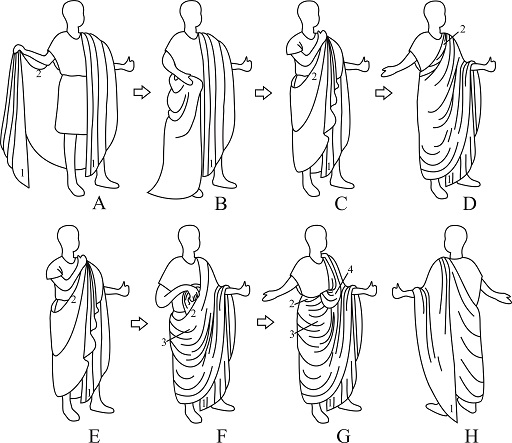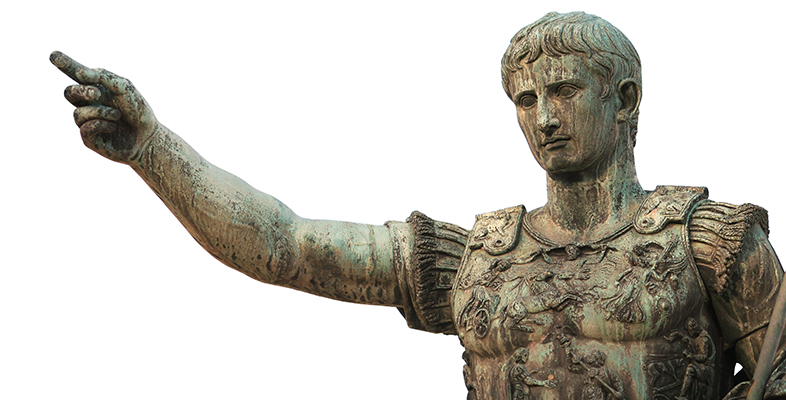3.3 The Augustan toga
In his Life of Augustus, the historian Suetonius makes the following comment about Augustus:
He desired also to revive the traditional fashion of dress, and once when he saw in an assembly a group of men in dark cloaks, he cried out indignantly, ‘Behold them, Romans, masters of the world, the toga-clad race!’ (gens togata) and he directed the officers never again to allow anyone to appear in the Forum or its neighbourhood except in the toga.
In this passage, Augustus is observed sarcastically quoting the lines from the Aeneid mentioned in the previous section to bewail the sight of men in central Rome wearing dark cloaks instead of togas. For him, this was a sign of the degree to which standards of propriety and patriotism had slipped over the course of the late Republic, and he was determined to do something about it. First, as the passage says, he made the toga compulsory in the civic heart of Rome. Second, he invented a new type of toga.
The Republican toga had consisted of a simple semi-circle of cloth draped diagonally around the body with the straight edge (balteus) at the top and the curved hem at the bottom. Augustus’s toga had an added semicircle of cloth called a sinus that formed a second layer with a higher hem. It was also draped in a more complex way, with a pocket of cloth (umbo) pulled out over the balteus (see Figures 12 and 13). (NB: the toga you saw in the video in the previous section was an Augustan toga!)

Activity 3
Scholars have speculated on the meaning of the imperial toga. Why do you think Augustus thought it a good idea to introduce a new style of toga?
Discussion
It is hard to pin down what this change meant in concrete terms: the new, Augustan toga would definitely have been more expensive, and would thus have provided a means for status distinction. (That is to say, only very rich citizens would have easily afforded one.) A new type of toga could also have been intended to symbolise the dawn of a new era. On the other hand, because it is so large and elaborate, it could be seen to symbolise an exaggerated adherence to all of the traditional values tied up in the toga as described in the previous section, such as peace, patriotism and civic duty. Perhaps it was a mixture of all of these!

